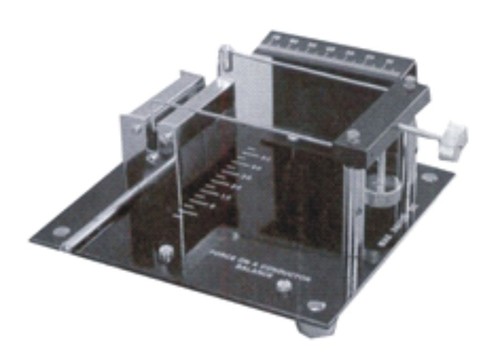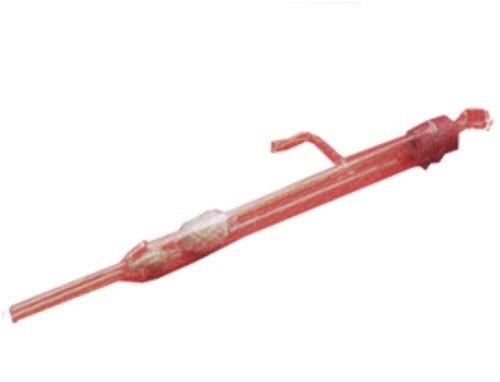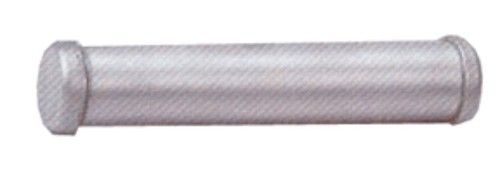FORCE ON A CONDUCTOR BALANCE
Product Details:
- Feature Highly Efficient
- Accuracy 100 %
- Usage Laboratory
- Click to View more
X
FORCE ON A CONDUCTOR BALANCE Product Specifications
- 100 %
- Laboratory
- Highly Efficient
Product Description
Also called Current balance. For demonstration of the relationship between force acting on a current carrying a conductor in a magnetic field. Two metal pillars mounted on an insulated base, each with a 4mm hole for electrical connecting. Conducting arms, consisting of a metal wire shaped into a rectangular L-loop, are mounted on a balance beam, which is supported on the pillar by two conical bearings that act as fulcrum. Two screwed masses are attached to the beam, one horizontally, for adjusting the equilibrium position of the arms, and the other vertically for adjusting the sensitivity. One conducting arm current a rider, which adjust equilibrium with the current flowing by sliding along a scale graduated 0-75 X 1mm. the bend at the end of the conducting arms oscillators vertically in the magnetic field produced by a compound magnet, comprising five identical, horseshoe magnets mounted in the frame. The magnets can slide along a rod mounted on the base with a 6cm scale, giving the length of arms in the magnetic field.Tell us about your requirement

Price:
Quantity
Select Unit
- 50
- 100
- 200
- 250
- 500
- 1000+
Additional detail
Mobile number
Email
Other Products in 'PHYSICS LABORATORY EQUIPMENT' category
SINGHLA SCIENTIFIC INDUSTRIES
GST : 06ACOPS0805K1ZD
GST : 06ACOPS0805K1ZD
No-5309/27, Punjabi Mohalla, Ambala Cantt - 133001, Haryana, India
Phone :07971191038
|
 |
SINGHLA SCIENTIFIC INDUSTRIES
All Rights Reserved.(Terms of Use) Developed and Managed by Infocom Network Private Limited. |









